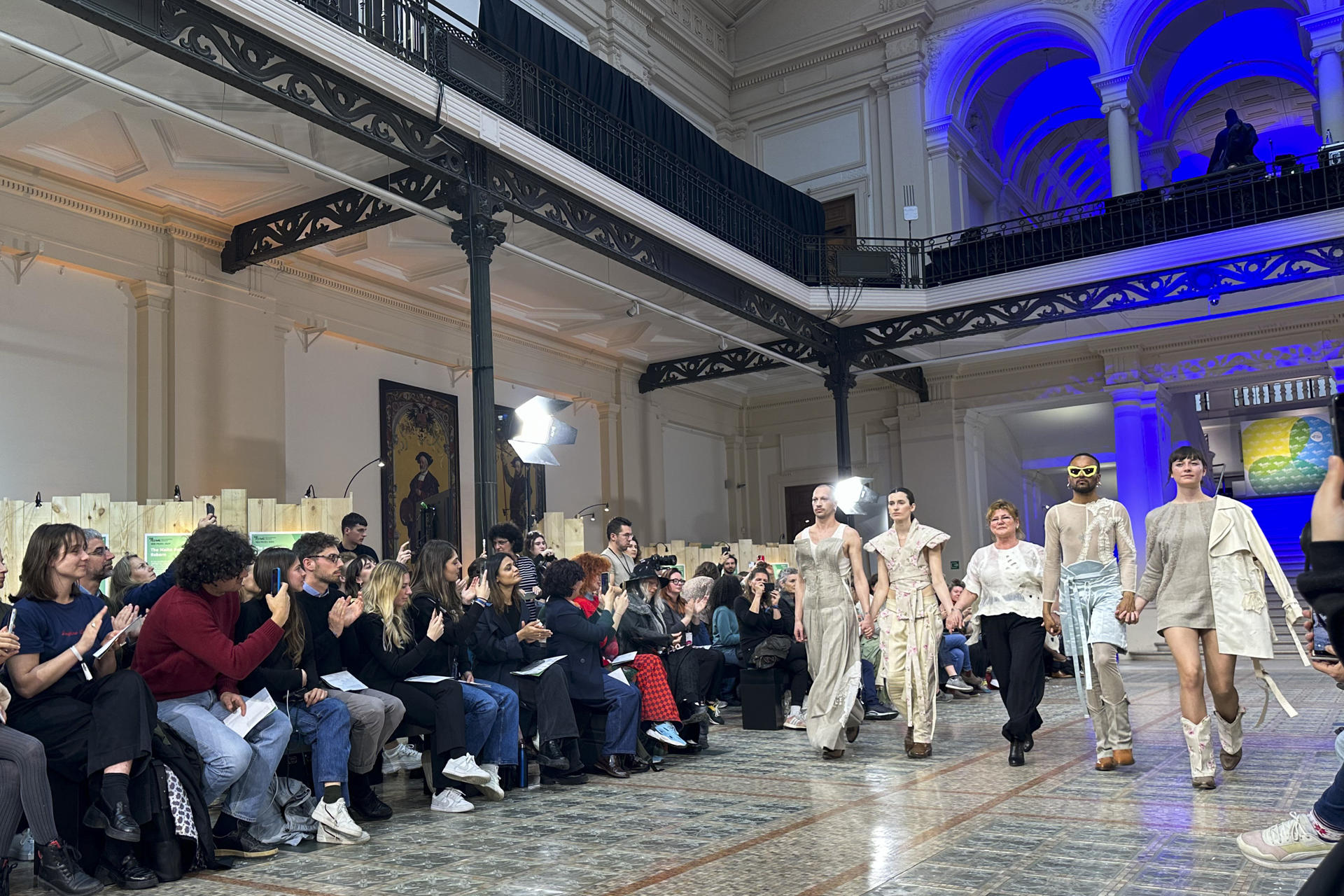By Laura P. Gutierrez
Brussels, Apr 11 (EFE).– Featuring fisherman hats, fantasy coats, asymmetrical designs, and fluorescent glasses, a sustainable fashion show closed Thursday’s session of the New European Bauhaus Festival, where 16 international designers showcased their call for change in the textile industry.
The runway event, part of the festival running from April 9 to 13 in the Belgian capital, took place at the Museum of Art History, where 30 models of diverse sizes and backgrounds paraded sustainable fashion designs in front of a packed audience.
Designers such as Martina Boero, Tomohiro Shibuki, Teresa Jamar, Matteo Minchio, José Baudart, and Flora Rabitti were among those who signed the creations.
Over five days, the New European Bauhaus Festival in Brussels hosts performances, exhibitions, and discussions that aim to bring sustainability, beauty, and inclusion closer to the public.
The fashion show concluded a day dedicated to reflecting on the impacts of fast fashion and the life cycle of textiles, at a time when the European Union (EU) is debating a new community strategy for sustainable textiles.
In an interview with EFE, Pascal Morand, Executive President of the Federation of Haute Couture and Fashion, highlighted that the fast fashion industry is changing due to “ultra-discounts that are coming strongly through platforms.”
“It is not uncommon when I speak with students that some of them say among their top five luxury brands is Zara. Price scales are shifting and this is linked to technology and the digital revolution through marketing,” said the economist.
Therefore, the head of the French fashion industry body – responsible for organizing events including the Paris Haute Couture Week and Paris Fashion Week – emphasized that consumers needed to know exactly what they were buying.
“The challenge is to make consumers understand what quality is, what durability is, and what surrounds it,” the economist stressed.
“You might have a great Uniqlo product that is good quality, and that is the point. But it needs to be recognized with certifications and labels because if you say it’s cotton and that’s it, it doesn’t work,” Morand pointed out.
Moreover, the president emphasized that designers themselves can “play a crucial role” in changing the textile industry.
“When we talk about sustainable fashion, especially in haute couture, I can think of numerous designers or young entrepreneurs who are absolutely driven by ecological models. They do this enthusiastically, but it also has to be profitable for them in terms of competitiveness,” Morand said.
The fashion day also featured a presentation by artist and set designer Katrin Porvaldsdottir, who works with seaweed as a material for design and advocates for its preservation.
“My goal has been to contribute to future generations. I do not claim to offer a solution, but to open eyes, encourage discovery, and explore that there are indeed other possibilities,” the artist said in statements to EFE at the end of the event.
While its use in cosmetics is common, seaweed and other biological materials like mushrooms have emerged in recent years as a sustainable alternative to fabrics like cotton and polyester, although their large-scale use still faces challenges due to the lack of necessary technology. EFE

